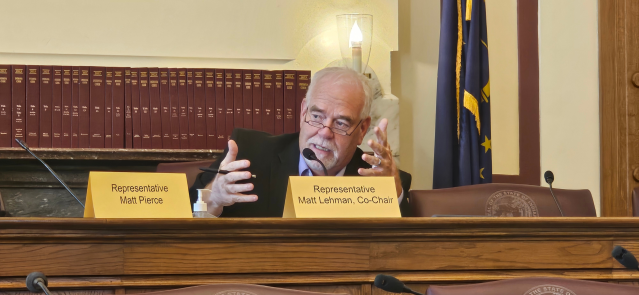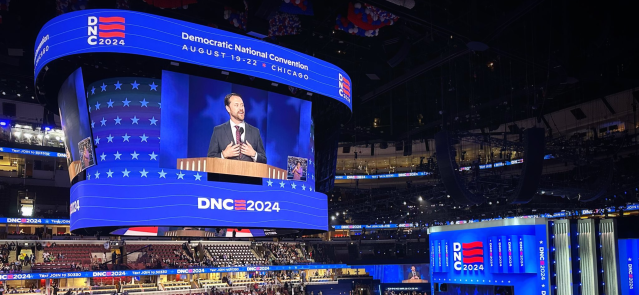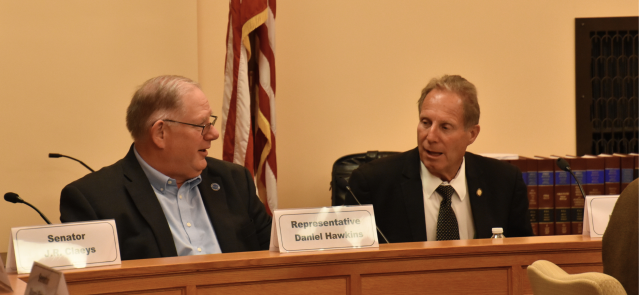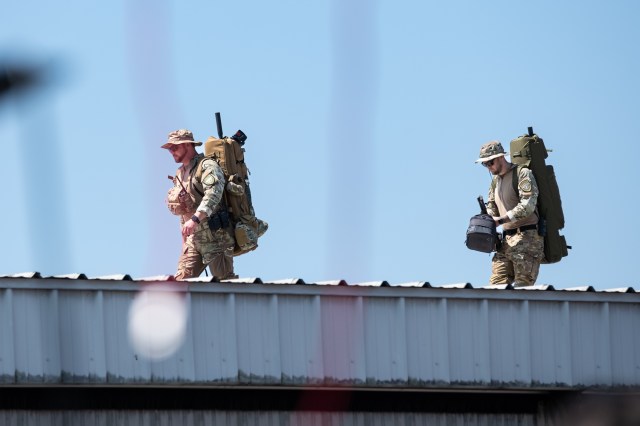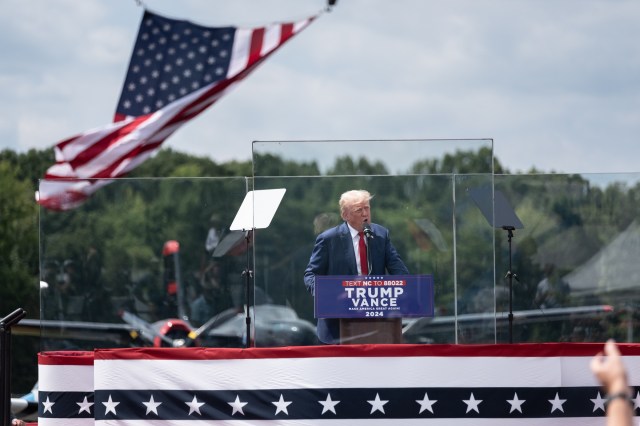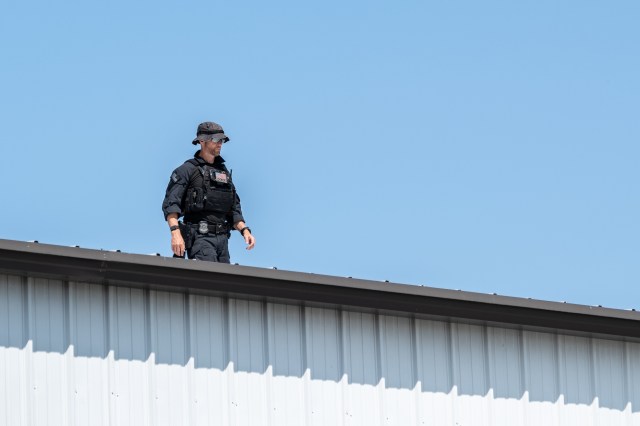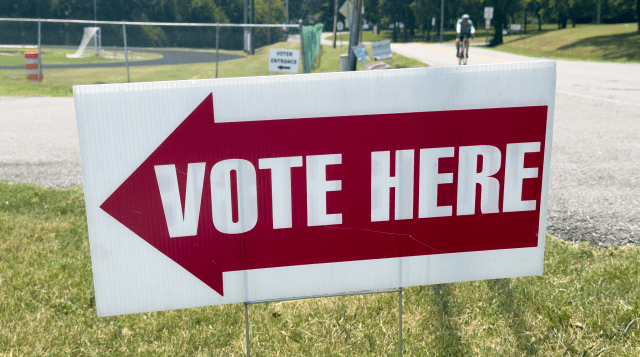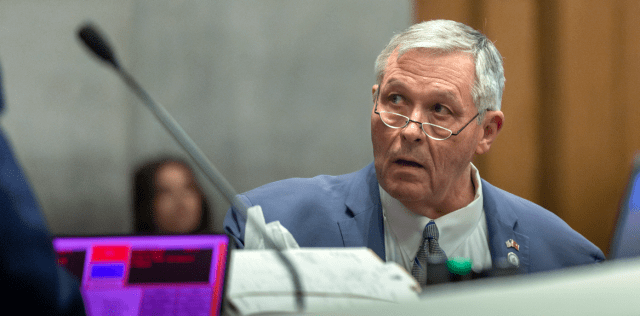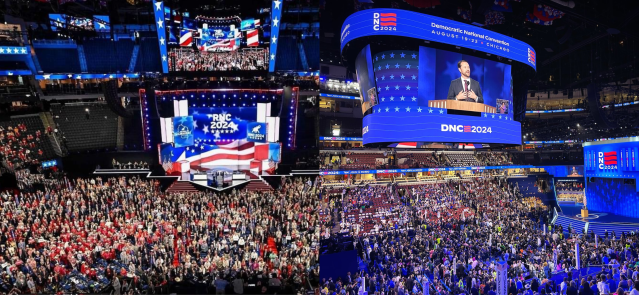The State Budget Committee on Thursday approved the transfer of an additional $101 million to the Indiana Economic Development Corp.’s deal closing fund.
The money will come from the state’s General Fund balance, according to Joseph Habig, the state’s acting budget director.
In the 2023 state budget, lawmakers earmarked $500 million for the corporation’s deal closing fund. They also noted the appropriation could be augmented, pending budget committee review, for any economic development project with a capital investment of $5 billion or more.
Project Fusion, a $5.9 billion investment in Howard County, according to the corporation, triggered the possibility for the augmentation. The project name is used for a Stellantis/Samsung SDI joint venture that’s building two electric vehicle battery manufacturing plants in Kokomo. To facilitate the investment, the corporation already committed $245 million in performance-based incentives, $120 million of which came from the deal closing fund, according to Cris Johnston, director of the Indiana Office of Management and Budget.
The budget committee also decided Thursday to allow the corporation to spend up to $101 million on projects in the LEAP Lebanon Innovation District — $36 million to purchase about 1,850 acres of land, $15 million for ongoing infrastructure development and up to $50 million to pay the early years of debt service for infrastructure with the capacity to deliver 25 million gallons of water per day to Lebanon — all of which will be paid for out of the deal closing fund.
“As a result of significant investments by Eli Lilly and other companies locating within the LEAP District, the City of Lebanon requires additional water capacity to serve these new tenants as well as to sustain the community’s continued growth,” the agenda request said.
Mark Wasky, senior vice president and special counsel to the secretary of commerce at the corporation, said the additional funds were needed to “sustain the momentum” the corporation has created in Indiana. Wasky told the committee that the corporation, to date, had exhausted $480 million of the state’s initial $500 million appropriation.
Democrats on the budget committee criticized the corporation’s approach and called for more transparency in its dealings. Sen. Fady Qaddoura, D-Indianapolis, said the corporation was “taking advantage of the language” in the state’s budget bill to finance three more projects in addition to Project Fusion.
“I’m personally uncomfortable with augmenting projects on the fly just because language in [House Enrolled Act] 1001 allowed them to do that when we have other crises and priorities in the state of Indiana,” Qaddoura said, noting thousands of Hoosiers are on Medicaid waiver waitlists.
Sen. Chris Garten, R-Charlestown, challenged Qaddoura’s thinking, saying the corporation would provide a financial return on investment. Wasky agreed with Garten’s assertion that the first $101 million earned from land sales in the district would go back to the state’s General Fund. Wasky added that the corporation averages “around [a] 6% to 8%” return on investment.
“The difference is the IEDC [Indiana Economic Development Corp.] is paying the money back. Medicaid is not,” Garten said.
In a statement issued after the meeting, Garten accused Democrats on the committee of “playing politics.”
“The assertion that our state isn’t prioritizing Medicaid investments is simply untrue — the most recent state budget fully funded the Medicaid forecast, and when our state experienced a Medicaid funding shortfall of about $1 billion, we used (and expect to continue to use) our reserves to cover that deficit,” Garten said in the statement.
During the meeting, Qaddoura questioned whether the return on investment for projects incentivized by the Indiana Economic Development Corp. was enough to offset the corporation’s expenditures and tax abatements given to companies at the local level. Rep. Ed DeLaney, D-Indianapolis, told Wasky he was “not impressed by the idea that you overpaid for land and then made a ‘profit’ on it from somebody to whom you’re going to give other money.”
Rep. Gregory Porter, D-Indianapolis, objected to using money from the General Fund to pay for the augmentation, saying it was effectively cutting into the state’s more than $2.5 billion surplus. He also claimed he has been excluded from meetings with the corporation’s leadership.
Porter, one of two Democrats who are voting members on the five-person committee, abstained from the 4-0 vote. The other voting Democratic member, Sen. David Niezgodski, D-South Bend, voted in favor of the committee’s agenda.
Porter’s motion to remove most of the corporation’s requests from the agenda did not receive a second.
Contact Jarred Meeks on X @jarredsmeeks or email him at [email protected].


